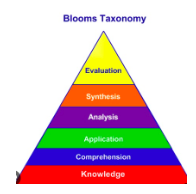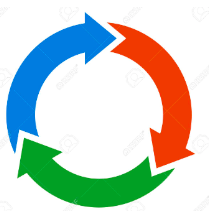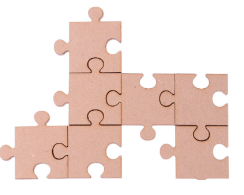I was first introduced to the different learning theories in my undergraduate studies and since then continue to find these conversations so interesting. From first learning these theories over 5 years ago, to now exploring and diving deeper into understanding them, it is interesting to reflect on how I use these different theories in my classroom.
Just to begin, I found this great visual, along with a quick blog to summarize these different theories. When reviewing this graphic, and reflecting on our class discussion, it becomes evident that in some shape or form, we as educators use all of these different learning theories throughout our teaching day whether that be consciously or unconsciously. However, as we explored further in class, we can see how some theories are becoming outdated, and maybe a new spin needs to happen to ensure we are providing our students with an authentic learning opportunity.

So how do I use these different theories in my own practice?

Let’s start with behaviorism. As our discussion in class, and from the graphic above, we see the theory of behaviorism often through our classroom management strategies and repetition learning. In Chapter 2.3 Objectivism and Behaviorism, the text states “behaviorism, with its emphasis on rewards and punishment as drivers of learning, and on pre-defined and measurable outcomes” creates a structured learning environment where students are able to succeed and receive immediate praise for their actions. I think of my classroom management when I think about the positive and negative reinforcement. Something that has worked well this year in specifically teaching my own Physical Education classes is I do a countdown for the students to be in their spots for instructions. At the beginning of the year I started my countdown and while I counted down I also gave verbal instructions on my expectations, they also would no longer hear our music playing. If the students get to their assigned spots before I hit zero they are “home free” where as if they do not make it they often get a negative reinforcement in the turn of a workout move (burpees, pushups, situps, etc.) for however many extra seconds it took them. As the year went on we continued to practice this procedure over and over with me giving verbal and hand cues to them. Now in January the students have associated with the music off what their job is to the point that I can countdown in a whisper voice. It works great in the gymnasium and also transfers well to the classroom. When reflecting on Skinner’s theory and approach, I still see these approaches as filling in the blanks and multiple choice questions in some of my exams, but specifically I see them in the CAT testing that my grade 7s do. I try not to turn to these forms of learning as much in my daily instruction as I often find the answers I receive to be vague and I do not get a good read on what the students actually understand.

The next theory I want to dive into being Cognitivism. As outlined in Chapter 2.4, the cognitivism approach would focus on “teaching learners how to learn, on developing stronger or new mental processes for future learning, and on developing deeper and constantly changing understanding of concepts and ideas.” This idea reflects well with Bloom’s Taxonomy and the understanding that we can gain knowledge in a variety of different ways. When I think of the cognitivist theory of learning, I think of the wording in our curriculum. In the chapter, the authors state cognitive approaches to learning have a focus on “comprehension, abstraction, analysis, synthesis, generalization, evaluation, decision-making, problem-solving, and creative thinking,” when viewing the curriculum, no matter the grade level these key words pop up many times. The goal, as outlined by our Saskatchewan Curriculum, is to teach and support students to comprehend, respond, interpret, understand, analyze, create, experiment, set and achieve goals. When comparing the language of this learning theory, and the outcomes teachers are mandated to teach, it becomes very clear the goal of education. Is to build students’ knowledge around certain topics, through different themes and subjects. So then is there a problem with the cognitivist approach? As mentioned above, I do think that there is a time and a place for these learning theories. When it comes to the cognitivist approach, we are looking at students as being on an assembly line, we teach them new content, they practice it, they put it in the back of their mind and it may stay there and maybe one day it will resurface. There is little room for interpretation and inquiry in this theory and often leaves the students conforming to the understandings of what the textbook taught them instead of having their own individual thoughts and conceptualizing and understanding those new topics. What becomes tricky with my classroom instruction in using this approach is I will have students fall through the cracks, whether it be because they are uninterested in the topic, or have difficulty in the way they have to complete certain tasks. With that, when referring back to our curriculum, I have yet to find a way to teach subjects such as mathematics, English Language Arts, and other subjects without relying on this theory. As our curriculum is layed out, a lot of what is deemed as “important” learning topics, often follow this approach which in turn sometimes make it difficult for teachers to branch past these rote memorization, lectures, and right and wrong answers.

The last theory I want to look into on this blog is the constructivist theory. As outlined in Chapter 2.5 constructivists “believe that learning is a constant dynamic process” and that understanding becomes deeper throughout time. The chapter goes on further to state “constructivist teachers place a strong emphasis on learners developing personal meaning through reflection, analysis, and the gradual build of layers or depths of knowledge.” In my experience in both an early years setting and now a middle years classroom, the lessons and learning activities I plan that follow this theory through personal experience and exploration have been the most successful. My younger students were able to self explore and be comfortable with trying new things, whereas my middle years students were open to taking risks, picking something that engaged them in the learning and in the end created the best products to showcase their understanding. As I am just entering my fourth year of teaching, little by little I am trying to find new and engaging ways to apply this form of learning into the classroom and showcase myself as the facilitator instead of the teacher, however, as mentioned above it is sometimes harder than it should be to do this. I know as I become more confident in the grade level I am teaching, the more flexible I will become with having my students reach the different outcomes that they are supposed to. However, through giving students the opportunity to do genius hour projects, and doing inquiry projects related to big themes it is evident that this form of learning and then learning from their peers is beneficial.
It is good to still be cautious and critical
One article this week made me think critically about my own teaching practice and how I am introducing these inquiry projects to my students. In the article Tales of the Undead…Learning Theories: The Learning Pyramid the author stated “a librarian might decide to implement a peer coaching activity because the pyramid says teaching others is the best way to remember something, but if the students don’t have the appropriate knowledge, they will probably just end up confusing each other.” This quote stuck out to me because I think that my students just know how to do inquiry projects, or use technology in the best way because they have grown up with it, however, when diving into these guided projects it is crucial we still give our students the tools for them to be successful. Throwing them into the deep end without the background knowledge will not support their understanding or their peers. With that being said, trailing back to the beginning of this blog post, there is a time and place for these learning theories, a time to discuss, to present, to ask questions, and to create. A good combination of them all I believe will support our students gaining a strong understanding of a variety of different learning objectives.

Left with a question
In the chapter reading this week, as well as my first picture, they brought up the theory of Connectivism. After reading the chapter and reflecting on your teaching practice do you feel you bring in this theory?
